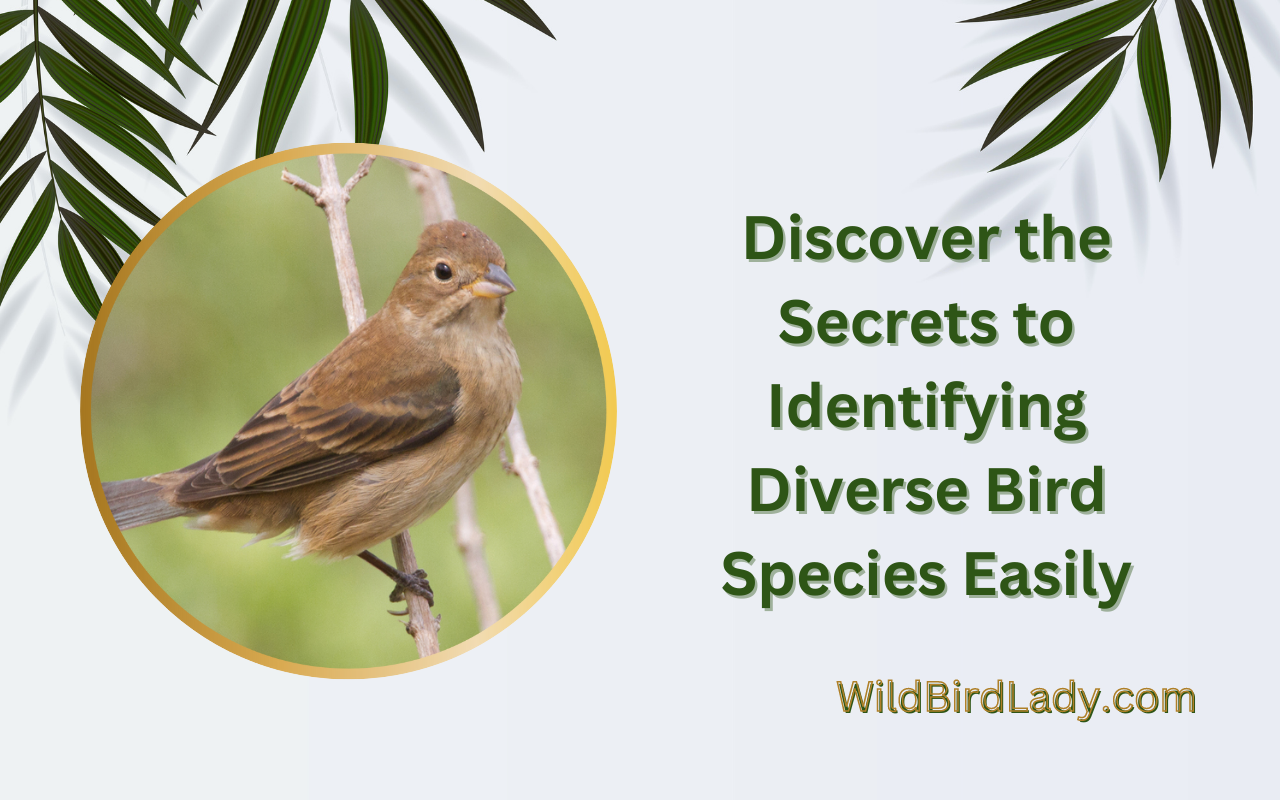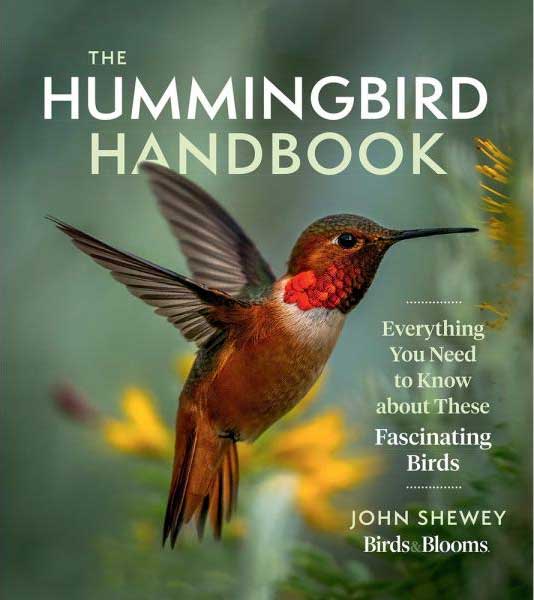To identify different bird species, use a field guide or birding app for visual and audio cues. Take note of color patterns, habitat, and behavior to narrow down options.
Bird watching is a popular hobby enjoyed by many. Whether you’re a new birder, an avid bird watcher, or just curious about identifying the birds in your backyard, this guide will assist you in identifying different bird species. Accurately describing the characteristics of a bird can be challenging, especially when you’re trying to identify it from a distance, but with practice and the right tools, it can be easy and enjoyable.
This guide will provide you with the basic methods, tips, and techniques to identify birds, including using field guides, birding apps, visual and audio cues, and more.
Understanding Bird Anatomy And Terminology
Key Bird Anatomy Features
Identifying different bird species can pose a challenge for beginners. But fear not! Understanding some basic bird anatomy features will make the task easier. Here are some key features to look for:
- Beak: Shape, length, and thickness of a bird’s beak is a critical feature used for identification of bird species. Size of a beak, for instance, could reveal a bird’s diet which varies across species.
- Wingspan: The length between the tips of a bird’s extended wings is known as wingspan. The wingspan varies among species, and it plays an essential role in determining how a bird flies.
- Tail: The tail design and length differentiate bird species. For instance, a woodpecker has a shorter tail compared to a cuckoo, whose distinctive long tail acts as an aerial rudder.
- Feather coloration: Color is a useful guide to differentiate between bird species. Different birds have feather colors that range from dull brown to vibrant, flamboyant tones like japan’s scarlet ibis.
- Eye rings: Most bird species have a bare ring surrounding their eyes. The ring’s color, thickness, and position on the head differ between species.
Understanding Bird Terminology
When identifying bird species, it’s important to understand their terminology. Here are some of the vital terms you should know:
- Taxonomy: This is the description and classification of organisms. Birds are classified based on their anatomical, genetic, and evolutionary characteristics.
- Plumage: This term refers to a bird’s feathers, collectively. Plumage offers critical information used in identifying bird species.
- Migration: The seasonal movement of birds between different geographic regions is known as migration. Understanding bird migration patterns could help identify different bird species.
- Fledgling: A fledgling is a young bird that has just fledged, meaning it has left its nest. Fledglings typically look different from adult birds, making them difficult to identify.
- Preening: Birds maintain their feather’s condition by regularly preening. This term refers to the process of birds cleaning their feathers, which involves using their beaks to spread oil over the feathers.
By understanding bird anatomy and terminology and being able to identify key features, you’ll be well on your way to becoming a pro birder. So grab those binoculars and hit the outdoors!
Using Bird Behavioral Cues To Your Advantage
Learning How To Observe Bird Behaviors
Before we dive into the world of bird behavior, it’s crucial to understand that different species exhibit unique behaviors. Therefore, observation is key to identify bird species correctly. In this section, we will discuss what to look for when observing birds and how to develop your observational skills.
Here are some key points to keep in mind:
- The way a bird moves, flies, and interacts with its surrounding environment is a crucial indicator of its species.
- Observe the size and shape of the bird, including its wingspan, beak, and tail length.
- Note the bird’s particular foraging habits and unique movements while feeding.
- Look out for vocalizations and patterns of group behavior.
- Body language is just as important. Pay attention to the bird’s posture, movements, and body language.
Identifying Bird Species Based On Behavior Cues
Now that you know what to look for while observing birds, it’s time to understand how bird behavior can help you identify and distinguish between different species.
Here are some behavior cues to help you identify bird species:
- Flight patterns: Watch the bird’s flight pattern for a helpful clue. Certain species, like the dipping flight of a nighthawk, fly in distinct patterns that could help with identification.
- Feeding habits: Keep an eye on how and where a bird feeds; its diet and hunting behaviors are essential for identifying certain species.
- Socialization: Birds such as crows or geese travel in flocks, making their presence more easily recognizable. Similarly, some species mate for life or exhibit particular courtship behaviors.
- Vocalizations: The calls, alarms, mating songs, and other sounds that birds make are vital aids in identifying different species.
- Habitat preferences: Different birds prefer different types of habitats. For instance, shorebirds are typically found near water bodies, while forest birds perch high in trees.
Remember that practice and patience are the key to becoming proficient in identifying different bird species by their behavior patterns. Observe as many birds as you can and learn from your experiences. Happy bird watching!
Field Identification Techniques
Bird watching is an increasingly popular hobby for nature enthusiasts and bird lovers. One of the joys of bird watching is identifying different bird species based on their unique physical characteristics. Field identification techniques play a crucial role in this process, as identifying birds in their natural habitat is different from observing them in isolated settings.
In this blog post, we will explore some practical methods and tools for identifying different bird species in the field.
Tools For Bird Identification In The Field
Having the right tools can make a big difference in identifying different bird species in the field. Here are some tools that can help:
- Binoculars: Binoculars are the most important tool for bird identification in the field. They bring birds closer to you, making it easier to observe their unique physical characteristics.
- Field guides: Field guides are books that provide detailed information about different bird species. They help you identify birds based on their physical characteristics, habitat, and behavior.
- Smartphone apps: There are several smartphone apps available that can help you identify different bird species by their appearance, behavior, and sound.
Observing Habitat, Range, And Time Of Year
Observing a bird’s habitat, range, and time of the year can provide important clues about its identity. Here are some tips for identifying birds based on their habitat and range:
- Look for birds in areas where they are most likely to be found. For example, water birds are typically found near bodies of water, while forest birds are usually found in wooded areas.
- Pay attention to a bird’s range. Knowing the typical range of a bird can help you identify it based on its location.
- Observe birds during their migration season. Many bird species follow migratory patterns, which can help narrow down the possible species.
Practical Field Identification Methods
Field identification methods involve observing a bird’s unique physical characteristics in its natural habitat. The following are some practical field identification techniques:
- Observe the bird’s size and shape. Different bird species have distinct body sizes and shapes that help in identification.
- Pay attention to the bird’s color patterns. Many bird species have unique color patterns that can help identify them.
- Observe the bird’s behavior. Some bird species have unique behaviors that can help identify them.
- Listen to the bird’s vocalizations. Different bird species have unique songs and calls, which can provide valuable clues for identification.
Identifying different bird species requires attention to detail, careful observation, and proper use of tools. By using the techniques and tools mentioned above, you can become an expert in field identification and enjoy the beauty of different bird species. Happy bird watching!
Advanced Techniques For Bird Identification
Bird watching can be a challenging but rewarding hobby. Identifying different bird species can seem daunting, especially if you’re new to bird watching. However, with the right techniques, it can become a fascinating and exciting experience. In this blog post, we’ll explore advanced techniques to help you identify different bird species accurately.
Let’s dive in!
Using Bird Anatomy Features To Identify Species
Observing a bird’s anatomy is an essential technique in identifying different bird species. This method requires close attention to the bird’s physical characteristics, such as its shape, size, color, and markings. Here are the key features you should look for:
- Beak shape and size
- Different bird species have distinct shapes and sizes of beaks, which can indicate what they eat. A hook-billed kite, for example, has a sharp, hooked beak to tear apart its prey.
- Wing shape and length
- The shape and length of the wing can determine the way a bird flies and what type of bird it is. For instance, the peregrine falcon has pointed wings for fast and agile flight.
- Tail shape and length
- A bird’s tail shape and length can indicate how it balances. The woodpecker, for instance, uses its stiff tail to prop itself up against trees while hunting for insects.
Learning To Identify Bird Calls
Another important aspect of identifying birds is by learning their unique calls. Each species has distinctive sounds, and identifying them can be an excellent indicator of bird presence. Here are some key points to keep in mind:
- Pay attention to bird calls’ pitch and tempo
- Birds have unique pitches and rhythms in their calls that can help you discern different species.
- Listen for the trills and songs
- Some bird species, like the robin, have vivid, melodic trills. These can be harder to pinpoint but help you to learn more about the beauty of bird language.
As you continue to learn about bird anatomy and calls, you’ll become more adept at identifying different bird species. Remember that patience and practice are crucial, and enjoying the process will help you gain a greater appreciation for these beautiful creatures.
Happy bird watching!
Frequently Asked Questions Of How Can I Identify Different Bird Species?
How Can I Identify Bird Species By Sound?
Bird calls and songs are great indicators of species. Listen for repetitive melodic notes or unique calls. Online databases like cornell lab of ornithology’s macaulay library provide sounds and images to visually identify bird species.
What Are Some Common Physical Characteristics To Look For In Bird Identification?
Observe bird coloration, size and shape, plumage patterns, beak and wing shape, and habitat location to distinguish bird species. Use field guides and binoculars to get a closer look.
How Do I Differentiate Between Similar Bird Species?
Identifying birds that look alike can be tricky. Note details like subtle plumage marks, beak shape, and habitat to distinguish species. Consulting a field guide, attending birding classes, or contacting local birding organizations can also help.
What Tools Do I Need To Start Bird Identification?
A field guide is a useful tool for identifying birds. Binoculars or a spotting scope will also be helpful for observing details like plumage markings or beak shape. Make sure to dress for the weather and terrain.
How Can I Attract Birds For Observation And Identification?
Bird feeders and birdhouses are practical ways to attract birds to your yard. Planting native vegetation and providing a source of water can also encourage bird visitation. Be patient and observant as birds may take time to recognize new additions.
Conclusion
As we conclude our exploration of identifying different bird species, the key takeaway is that observation, research, and an open mind can lead to success in identifying birds. By paying attention to characteristics such as size, coloration, behavior, and habitat, we can start to narrow down the possibilities.
Utilizing field guides and online resources can help confirm our observations and provide additional information. It’s important to remember that identifying birds takes practice and patience; not every bird will be immediately recognizable. However, with determination and enthusiasm, identifying birds can be a rewarding and enjoyable activity for bird watchers of all levels.
So get outside, start observing, and let the birds enchant and inspire you. Happy birding!
Read Also:
- How to Clip the Wings of an Amazon Parrot
- Unlock the Secret: How Long Should Your Birdwatching Sessions Be?
- The Ethics of Birdwatching: Do’s and Don’ts
- Discover Urban Birdwatching: Yes, It’s Possible!
Published on May 29, 2023 | Last Updated on June 28, 2025 by Rifat Ahmed
Latest Posts
How Long Do Cardinals Live? Discover the Secrets Behind Their Lifespan
By Rifat Ahmed – Birdwatcher with 13+ Years of Experience There’s something magical about the flash of red that flits across a winter landscape. The Northern Cardinal, with its brilliant...
Baby Blue Jays: Life Stages, Care Tips, and What to Do If You Find One Alone
As a birdwatching enthusiast for over 13 years, I’ve had the privilege of observing blue jays in every stage of life. From the moment they hatch until they take their first flight, baby blue jays...



